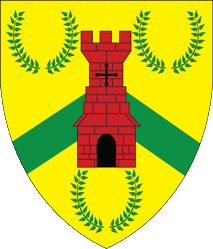The SCA has been active in Kitchener-Waterloo consistently for over 30 years. In its current form it is the Canton of Bryniau Tywynnog – a “canton” being the name of a local group that is part of a larger Barony.
We have been active during that time within the community in a number of ways:
- Demos for public schools where the medieval unit is taught
- Participation in the City of Waterloo – University of Waterloo Canada Day festivities.
- Medieval Faires on the Island in Victoria Park
- Kitchener’s Artsfest and Kidspark.
We have also made frequent appearances at the libraries and community centres around town, and can sometimes be seen at local pubs and restaurants, or on the street en route to local events or meetings, in full costume (or “garb”)
Origin of The Name
The name “Bryniau Tywynnog” (pr: BRIN’-ee-aw Te-WIN’-og ) means “Sandy Hill” in Welsh. It is a name rooted in local history.
The original settlement which eventually became Kitchener was founded in 1807, at the farm of Joseph Schneider, a Mennonite settler. The town was originally named Ben Eby’s, after Bishop Benjamin Eby, another early settler. Later the town’s name was changed to Ebytown, and finally, to “Sandhills”, the root of the Canton’s name.
Sandhills was renamed to Berlin in 1835, after a wave of German immigrants moved to the area, and largely displaced the original Mennonite settlers from the town proper. Due to a negative association with Berlin during World War I, it was renamed to Kitchener in 1916.
What’s the Green and Yellow Shield About?
The image on this page is Bryniau’s medieval heraldry, called a “device”. In the middle ages, devices like these were used to identify people both on and off the battlefield.
Each device is described using an esoteric language called “Blazon”, which allows heralds to be able to draw the device without having ever seen the heraldry in person. The device of Bryniau Tywynnog is blazoned as “Or, a chevron vert surmounted by a tower gules between three laurel wreaths vert.”
